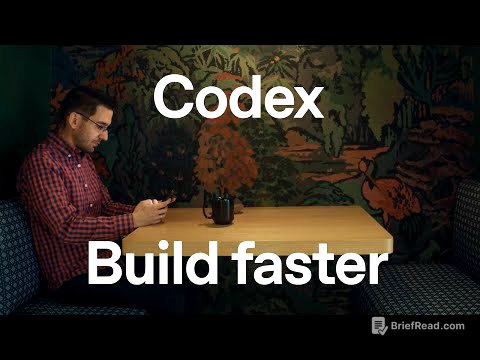TLDR;
This video provides a walkthrough of 25 educational psychology practice questions, offering explanations and insights relevant to the Banik Justi Triber SoDRP 2025 exam. It also includes tips for test preparation and maximizing scores, emphasizing understanding concepts and question patterns. The video further discusses the importance of perseverance, focusing on learning objectives, and adapting teaching methods based on student feedback.
- Practice questions with detailed explanations.
- Tips for effective test preparation.
- Importance of understanding concepts and question patterns.
Introduction [0:00]
The video starts with an encouraging message to Tamil-speaking viewers preparing for the B.Ed exam, urging them to persevere and remember their initial motivation for pursuing teaching. It emphasizes focusing on achievable units and facing difficult topics with determination. The content is part of a series on Educational Psychology Unit 5, specifically Part 4, for the Banik Justi Triber SoDRP 2025 exam. There's also a mention of a potential combined test for Units 4 and 5 on the weekend, with a call for viewers to express their interest in the comments. The channel aims to provide quality material, including videos on educational psychology, GK, and Tamil, to support viewers until their exams.
Practice questions walkthrough [1:28]
The video presents and explains 25 practice questions related to educational psychology. Here's a summary of the questions and key points:
- Bloom's Taxonomy: Teachers using Bloom's Taxonomy should ensure teaching objectives are measurable at appropriate cognitive levels.
- Bruner Inquiry Training Model: This model structures student inquiry through guided activities.
- Analogies and Overviews: Using analogies and overviews before detailed instruction provides context and aids understanding.
- Teacher Autonomy and Responsiveness: Teachers demonstrate these qualities by adapting the pace and materials based on student feedback.
- Project-based Teaching: Emphasizes the child's wholehearted, purposeful activity in a social context.
- Microteaching Cycle: The classic sequence is Plan, Teach, Feedback, Replan, Reteach.
- Skinner's Theory: Reinforcement, whether positive or negative, increases behavior.
- Inquiry Training Model: Encourages students to discover knowledge through inquiry, useful for problem-solving and critical thinking.
- Student-Centered Approach: Project-based learning is a student-centered teaching approach.
- Reducing Forgetting: Rereading after a break (spaced repetition) helps reduce forgetting.
- Long-Term Memory: Divided into declarative and procedural memory.
- Functional Stabilization: Associated with P.F. Skinner's operant conditioning theory.
- Law of Effect: Behaviors followed by satisfying consequences are more likely to be repeated.
- Positive Learning Environment: Empathy and understanding are crucial teacher attributes.
- Negative Transfer in Language Learning: Occurs when first language grammatical structures interfere with second language learning.
- Overjustification Effect: In operant conditioning, intrinsic motivation is replaced by extrinsic rewards.
- Project Failure: Occurs when there is no real-world connection.
- Inquiry Training Model (Richard Suchman): Focuses on training students to engage in scientific inquiry.
- Diverse Learning Styles: The inquiry training model recognizes visual, auditory, reading, writing, and kinesthetic learning styles.
- Effective Communication Skills: Include communicating complex ideas clearly.
- Impact of Policies: Policies like "No Child Left Behind" and "Every Student Should Succeed" increase the emphasis on the teacher's responsibility for student performance and learning.
- Displacement in Short-Term Memory: New information pushes out old information.
- Guide on the Side Teaching Style: Closely related to the student-centered approach.
Tips to maximize your score [10:19]
The video concludes by advising viewers to carefully review the questions, understand them thoroughly, and determine how the answers are derived. It encourages viewers to subscribe, like, and share the video for continued support.
![Unit 5 | Part 4 | TRB Education Psychology MCQs [2025] | FREE PDF](https://wm-img.halpindev.com/p-briefread_c-10_b-10/urlb/aHR0cDovL2ltZy55b3V0dWJlLmNvbS92aS9GVFY1bVItV0M5US9tYXhyZXNkZWZhdWx0LmpwZw==.jpg)








